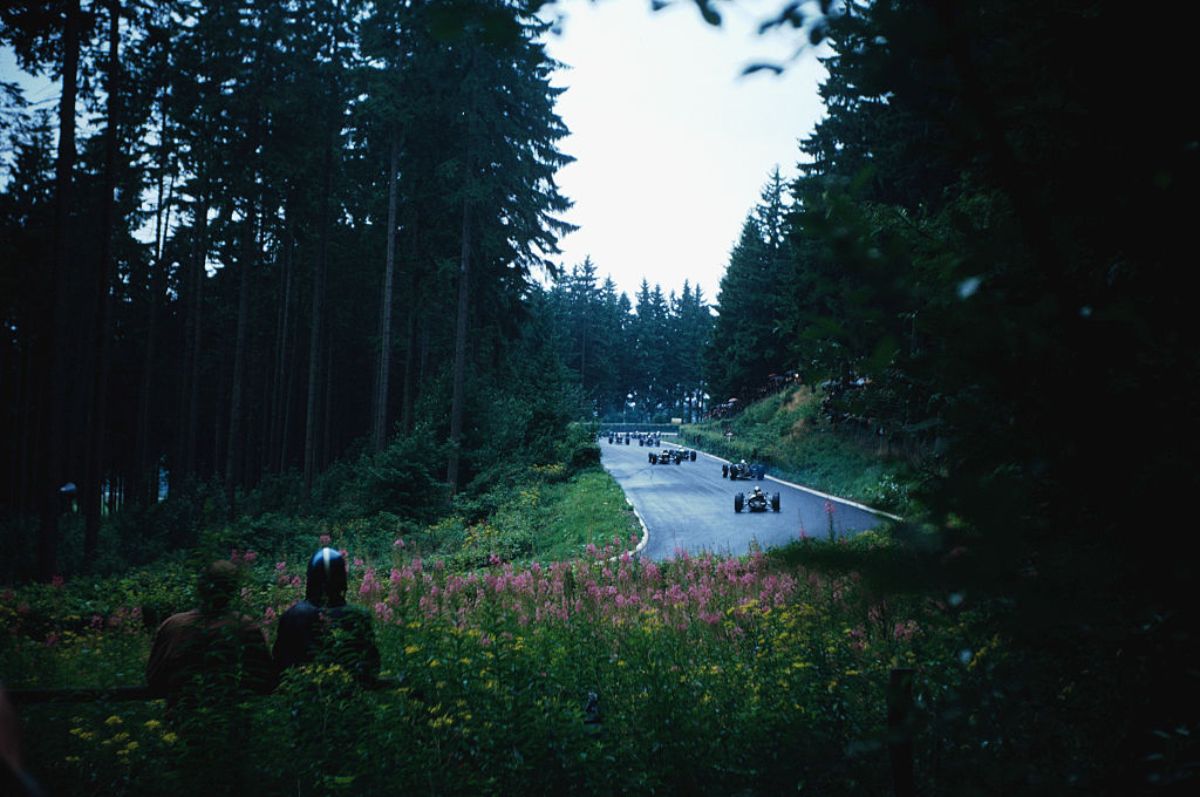
Want to Drive the Nürburgring? Here’s What You Need to Know First
A well-traveled and pock-marked ribbon of asphalt scything through Germany’s Eifel Mountains is the holy grail for many driving enthusiasts. Located in and around the Rhineland’s small town of Nürburg is the fabled Nürburgring. Over the last 100 years, the track has taken the lives of hundreds of professional race car drivers and novices alike.
Don’t let danger dissuade you, however. Hundreds of thousands of drivers make the trek to the Nürburgring every year. While there is plenty of track faux pas in YouTube compilations, it could be the most exciting driving experience of someone’s life. Below are some things you need to know before you go.

What is the Nürburgring?
Many may not realize that the Nürburgring is actually two—technically three—tracks in the same area. Although many speak of the Nürburgring as a whole, it includes the Nordschleife, Gesamtstrecke, and the Grand Prix (GP) Track.
The Nordschleife, or “North loop,” is what people usually refer to when speaking of their track pursuits. RSR Nürburg, one of the track’s rental car companies, says the Nordschleife is the circuit 99% of people come to drive.
Completed in 1927, the track is a 14-mile, 150-corner leviathan that former Formula One driver Jackie Stewart dubbed “The Green Hell.” Notably, the Nordschleife is very rough, with little to no run-off areas, and has a surplus of blind corners.
The GP Track, on the other hand, is much shorter, newer, and less dangerous. Built in 1984, the track serves as a slot on the Formula One Calendar, dubbed the Eifel Grand Prix. It’s also used for Deutsche Tourenwagen Masters (German Touring Car Masters series), the World Touring Car Championship, and the European Le Mans series.
The circuit is only 2.2 to 3.2 miles long and has no more than 17 corners. Unlike its overshadowing big brother, it has plenty of asphalt run-offs, gravel traps, and tarmac without massive potholes in the middle of the corners. As a modern FIA racing track, it’s only open to the public roughly twice a month.
The third track is a mixture of the previous two, as Gesamtstrecke literally means “combined.” Depending on which parts of the GP Track are used, the circuit is between 15.5 and 16.7 miles long. Used for the Nürburgring 24 Hours and Nürburgring Langstrecken-Serie (NLS) endurance circuit, it’s rarely open for public driving, no more than six days per year.
Can anyone drive on the Nürburgring?
Not everyone can drive the Nürburgring. But if you are a licensed driver, it shouldn’t be a problem. If your license isn’t in English, German, or European format, track officials request an international driver’s license translation.
Apart from licensing requirements, there are two particular types of driving experiences. Touristenfahrten, or public driving sessions, are for those who want to just show up and drive. Since there are few restrictions and any road-legal vehicle can take part, up to 10,000 drivers may hit the track on a single day.
During the experience, however, since it’s filled with inexperienced motorists, one must complete a lap and then exit the track. Also, drivers must navigate barriers that slow down traffic on the two-mile Döttinger Höhe Straight.
The Nürburgring also hosts official track days, which only number about 20 per year. However, it’s better if you want to learn the track without thousands of adolescents storming around corners.
There won’t be any buses, trucks, or motorcycles during official track days, as only cars are allowed—sometimes only track-focused and race-spec cars. Drivers will also have strict safety briefings, and the experience is much more gentlemanly than the Touristenfahrten free-for-all. Critically, drivers are free to belt down Döttinger Höhe without slowing down.
How much does it cost to drive on the Nürburgring?
Per the Nürburgring website, an amateur driver can get on the track for a lap for only €30 ($32) Monday through Thursday. From Friday until Sunday and on public holidays, the lap will cost €35 ($37.25).
A 15-minute blast on the GP Track will cost the same. If you’d rather pay upfront for an unlimited number of laps, the Nürburgring has that covered. The 2023 season card is €3,000 ($3,193), but you can get the pre-sale card for only €2,500 ($2,660.75).
For track days, a myriad of companies offer experiences, including car rentals. These are anywhere from a few hundred to a few thousand Euros per day or weekend. Luckily, the cost of accident removal is included in most.
Speaking of accidents, they also present a serious financial issue that adds up quickly. A UK-based Nürburgring experience site explains that a recovery truck is €500 ($532), safety car attendance €82 ($87.25) per 30 minutes, and circuit closure is an eye-watering €1,350 ($1,437) per hour.
Nevertheless, many more costs depend on the accident, including damaged posts, guardrails, and other repairs. Jalopnik says your price for damaging the track and getting out of the way averages over €3,000 ($3,193).
Insider tips for driving on the Nürburgring
RSR Nürburg says drivers should schedule their visits during the shoulder seasons—March-April and October-November. The unpredictable weather in the Eifel Mountains is a little tamer during those months.
Weekday driving is much easier to handle for first-time drivers. Since most people work during the week, there will be much less traffic on the track. One of the most important things to do, especially if you’re visiting from outside Germany, is plan to be at the Nürburgring for multiple days.
Considering the erratic Eifel Mountain weather and track closures due to accidents, multiple days will help you hedge your bets.


